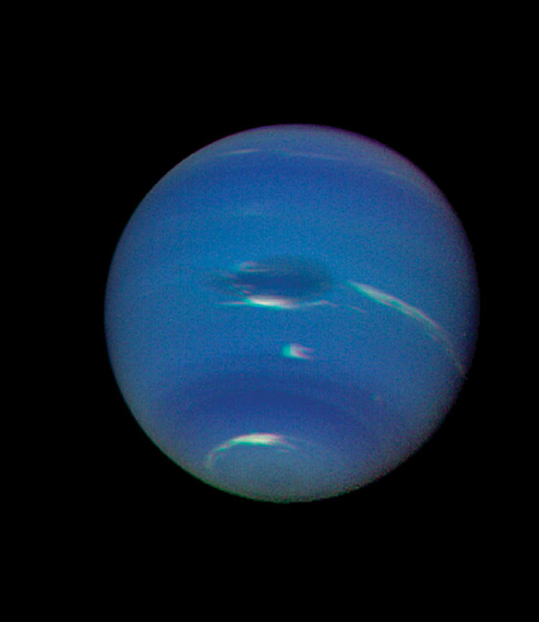1846
Discovery of Neptune
Urbain LeVerrier (1811–1877), Johann Galle (1812–1910), John Couch Adams (1819–1892)
During the decades following its discovery in 1781, astronomers had carefully tracked the position and refined the orbit of the slow-moving planet Uranus. Several noted slight differences between what Newton’s Law of Gravity predicted and its actual path across the sky. Two particularly talented theoreticians, the English astronomer John Couch Adams and the French mathematician Urbain LeVerrier, thought that these differences might be caused by the gravitational pull of another, yet unseen planet.
Working independently during 1845 and 1846, LeVerrier and Adams each developed predictions about where this hypothesized “perturber” of Uranus might be found in the sky. Adams convinced colleagues at Cambridge to search for the planet, but it was not recognized as more than a star by the observers, who had a lot of sky to cover.
In contrast, LeVerrier’s prediction was over a narrower region of the sky, and it took only a few hours on the night of September 24–25, 1846, for his colleague, the German astronomer Johann Galle, to find it from Berlin Observatory and (over several more nights) confirm its identity as the eighth planet. The discovery was hailed as a triumph of Newtonian physics, and the French mathematician and politician François Arago proclaimed that LeVerrier had discovered a planet “with the point of his pen.” LeVerrier and Galle were jointly credited (by a gracious Adams, among others) with the discovery of the new planet, and LeVerrier chose to name it Neptune, after the Roman god of the sea. Its discovery doubled the size of the solar system yet again.
With an average orbital distance of 30 astronomical units and an orbital period of nearly 165 years, Neptune’s small apparent diameter and very slow motion explain why several earlier astronomers, including Galileo, had observed Neptune but, like Adams’s colleagues at Cambridge, had not recognized it as more than just another bluish star. Neptune has been studied up close by just one space mission, the Voyager 2 flyby in August 1989, providing scientists with a fleeting glimpse of a beautiful and stormy blue world in the far outer reaches of our solar system.
SEE ALSO Neptune (c. 4.5 Billion BCE), Newton’s Laws of Gravity and Motion (1687), Discovery of Uranus (1781), Triton (1846), Voyager 2 at Neptune (1989).
A nearly “full Neptune” photographed by the Voyager 2 space probe as it approached the planet. The Great Dark Spot seen here near the center of the planet’s disk is thought to be a large swirling storm system similar to Jupiter’s Great Red Spot.
